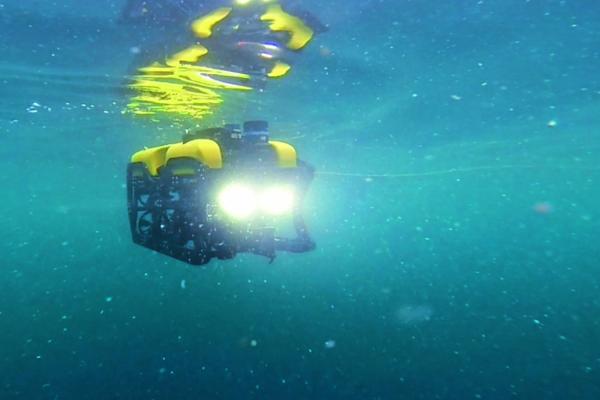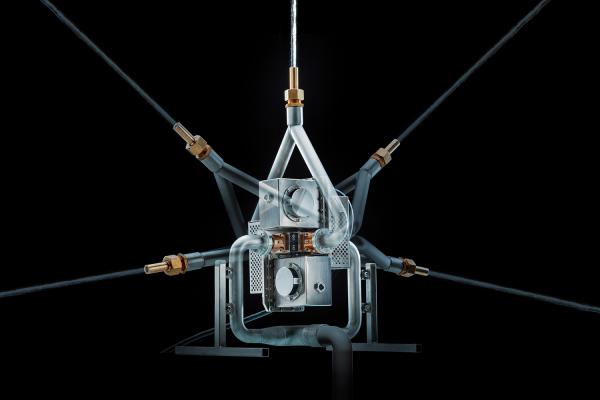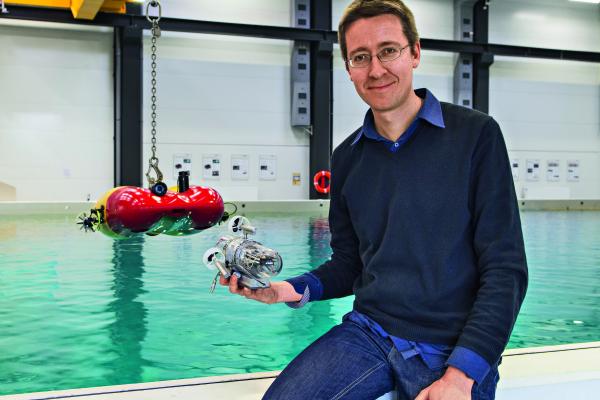At a depth of 1000 meters, it is ice cold and dark. No natural light penetrates here. At first, only silhouettes are discernible in the glare of the underwater robot’s floodlights. Then strange, three-legged objects appear on the bottom of the ocean. They are receiver stations for electromagnetic waves transmitted into the seafloor, to visualize its geological strata and find resource deposits.
When oil companies want to find out whether drilling at depth is worth the cost, they often rely on Controlled Source Electro Magnetic (CSEM) technology. This technology exploits the differences in the electrical resistance of different bottom layers to provide clues about the location and size of oil fields. The CSEM technology uses a very strong power source to generate an electro-magnetic field, as well as several receivers to record the fields. These tripod receivers are placed on the sandy bottom and pick up electromagnetic signals that have been changed by the layers through which they passed.
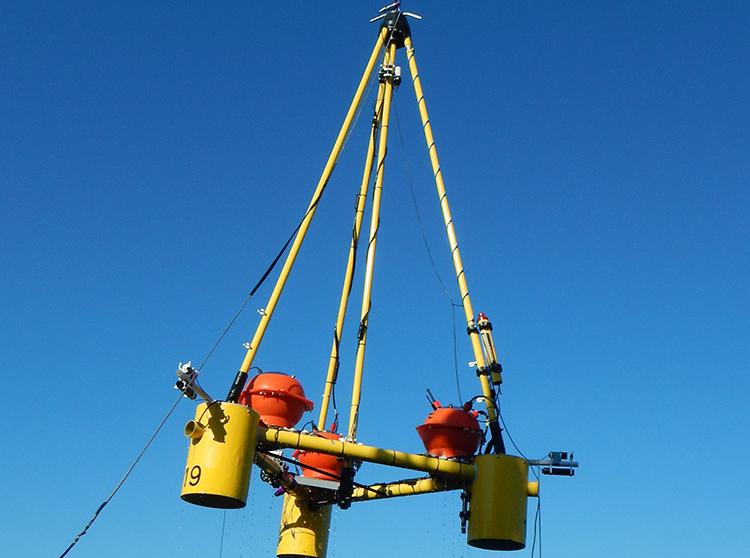
5000 meters below the seafloor
In 2016, the Norwegian company Petro-Marker placed 25 new tripods in the North Sea. The special thing about this new measuring method is that, unlike other measuring methods, the company uses a vertical transmitter and receiver to find resources under the bottom. This enables a much more detailed resolution and data measurement up to 5000 meters under the seafloor, the company claims.
The tripods are about 4 meters high and made from a combination of glass fiber and special foams. Due to the sensitive electronics, metal parts cannot be used. This far below the surface, the pressure is extreme, and the salt water is aggressive.
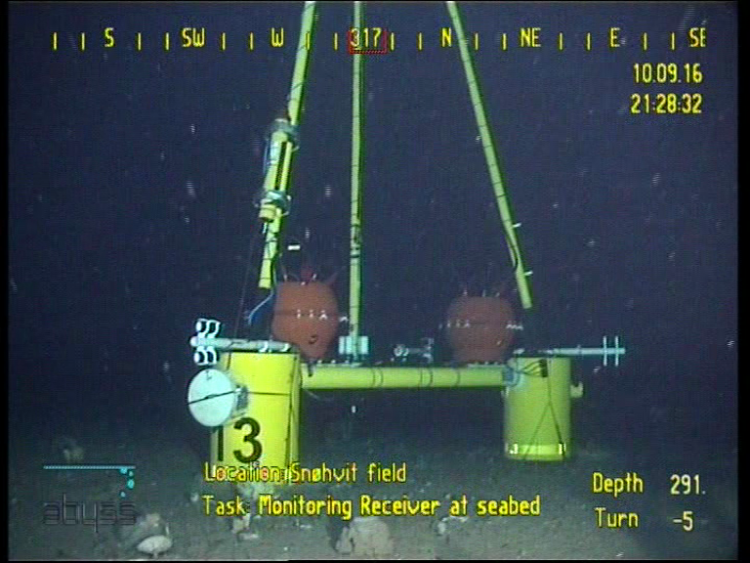
At the center of the tripods (receivers), the antennas are aligned as vertically as possible on the seabed.
Underwater drives for vertical alignment
A prerequisite for the exact capture of electro-magnetic data is that the antennas are aligned perpendicular to the seafloor – or as close to perpendicular as possible, as the seafloor isn’t always flat. To this end, the company has developed new receivers that enable a vertical alignment of the antennas at the center of the tripods with high precision. This is where the underwater drives from maxon motor come in.
They are installed at the lower end of the receiver antenna to align it vertically as needed. The maxon drive solution excels through its compact design and low weight. The centerpiece of the oil-filled underwater drive system is a motor-gearhead combination, comprising a brushless DC motor (BLDC) and planetary gearhead.
The system is completed by a controller (EPOS) and a compensator. The units are encased in plastic to protect them from corrosion. Several modifications were required to meet the specifications for this application: The EC-i 40 motor and the GP 42 planetary gearhead are customized, and the compensator isn’t off-the-shelf either. A dual seal, imitating typical submarine technology, ensures that the system is able to resist the enormous water pressure.
The control electronics of the underwater drive are housed in a pressure-neutral glass ball that is able to resist the pressures of up to 600 bar – one of the challenges of this extreme application. Carsten Horn, Aquatic Solutions project manager at maxon motor Sexau: “This is an extremely interesting project where the new underwater drives are used. The successful field trial of the tripods in the North Sea proves that maxon’s technology works exceedingly well."

